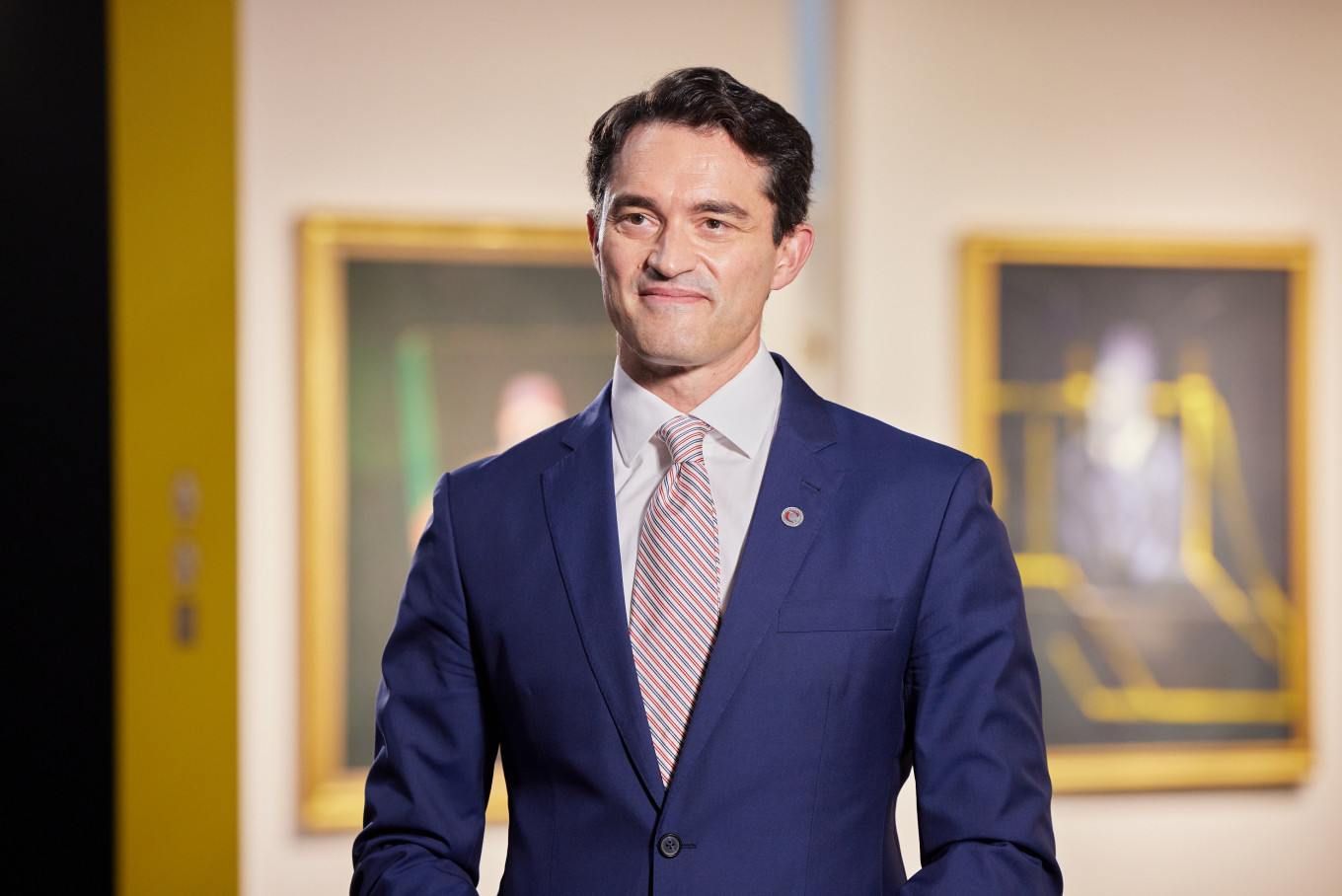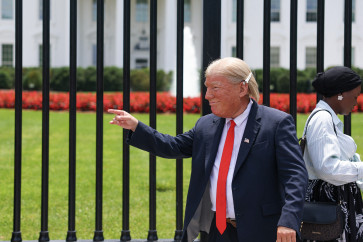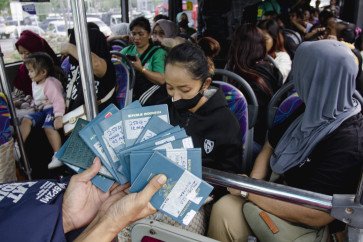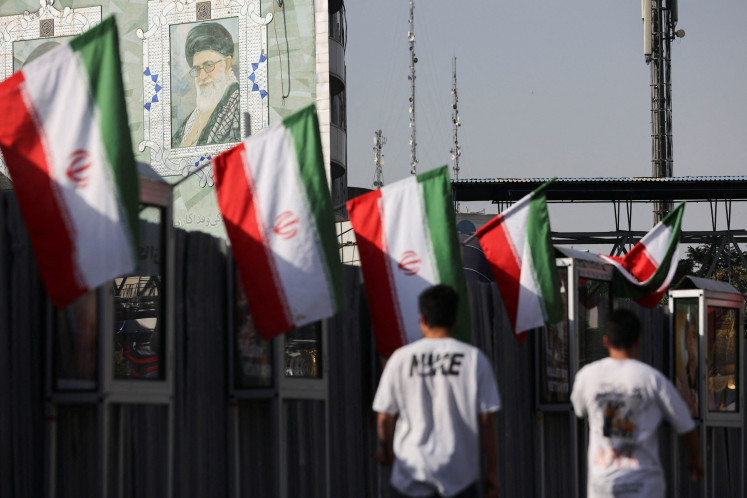Popular Reads
Top Results
Can't find what you're looking for?
View all search resultsPopular Reads
Top Results
Can't find what you're looking for?
View all search resultsChristie's cheers influx of Indonesian collectors, artists
Francis Belin, President of Christie's Asia Pacific, says Indonesia's young art collectors are trendsetters and the country’s artists can make it big in the global market.
Change text size
Gift Premium Articles
to Anyone

Asian collectors made the most purchases at luxury auctions in the first half of the year, according to Christie's. A report published by the British auction house on July 12 found that the region accounted for 38 percent of the global luxury auction business, followed by 34 percent from Europe, the Middle East, and Africa (EMEA) and the remaining 28 percent from the Americas.
Christie's Asia Pacific President Francis Belin spoke to The Jakarta Post's Yohana Belinda in Jakarta on Aug. 9 about collectors' and purchasers' preferences post-pandemic, the future of the business in Indonesia and the position of Indonesian artwork in the global market.
Question: In the post-pandemic era, how does Christie’s connect with collectors online and offline?
Answer: We started to be very active digitally before the pandemic, with online sales and live streaming, enabling people to bid on Christie’s online. […] All the innovations we had in the digital space since well before the pandemic, all of a sudden started to gain much traction in our ability to engage with the collectors.
And here we are today, as Hong Kong opened earlier this year, where everyone could return. We experienced in May the combination of both worlds [online and in-person]. We had almost 40,000 people visiting our view. We also had an absolute record in terms of online viewership.
We've gone from strength to strength. The first half of 2020 was challenging, not so much because there was no buying appetite, but because there was a lack of supply. And there was a lack of supply, because it wasn't clear, actually, where the market was heading. It was not easy for us to hold auctions or exhibitions. Soon after, in the second half of 2020, particularly in 2021, we started to see a strong pickup.
In the post-pandemic era, have you observed any changes in the preferences of ASEAN collectors?
I think that one of the most significant changes is how prominent a younger generation of collectors has become […], whether it's the number of new clients, the aggregate number of clients or the value being bought by these clients.
Firstly, we see a trend with younger collectors globally, but we see that trend even more pronounced, I would say, in Indonesia. Secondly, we see in addition to that very established base of collectors across categories that the new base of collectors is interested in multiple categories of art and luxury. There's sometimes a perception that younger collectors would just go for big names in contemporary art or maybe more flashy watches. Yet, this is not what we see. We see an influx of young collectors from Indonesia and to Christie's that are very well researched and read.
Have you observed a surge in participation from young collectors/buyers in Indonesia? How does their participation shape the market dynamics?
I see [Indonesian clients] everywhere. I see them in Taipei, I see them in Singapore, and, of course, I see them in Hong Kong. And I think that also reflects their level of engagement in learning, being exposed to, and discovering more of the categories. So, Indonesia has a young generation of collectors who are doing their homework.
We see that these young collectors, including Indonesian collectors, are very hungry and very dedicated to learning about collecting and about the objects.
Are there any unique characteristics that make Indonesian artworks particularly appealing or sought-after by collectors?
We see that Indonesian art has been a key feature of our sales in Hong Kong for a long time, whether it's modern artists or contemporary artists. […] Across the spectrum of modern and contemporary Indonesian artists, we continue to showcase them in our sales, and they perform very well. I mean, it was 100 percent sold. And what I think is very unique about Indonesian art is it's an art that is very rooted in cultural diversity that Indonesia has in tradition and spirituality.
If you look at painters, including Affandi or Gunawan, some of the modern masters, they are unique in their style, in their technique, and sometimes even in the subject matter they have. I feel that Indonesian artists have a place on the world stage for their creations.
How has the appetite for Southeast Asian art, specifically Indonesian art, evolved over the past 10 years?
We see Indonesian art collected by different Southeast Asian collectors that are not necessarily Indonesian. I believe that there's a strong appeal historically for Indonesian masters, but also Indonesian contemporary artists. I think it's a very unique feature. We had to magnify the quality of the objects. We don't substitute. We had to put a bit of makeup and light on the object, but fundamentally, the quality of the art creation has to speak. And I think that trend is a testimony to the quality of art in Indonesia, supported by a very loyal base of collectors in Indonesia, which is always important to ensure that the market is sustained in the original geography.
How does Christie's curate artworks for its auctions? How do you balance the appeal to collectors with the reflection of current market trends?
We're not here to pump up the numbers at all costs. […] We want people to go through our previews and be excited by what they see. Some of them are things that they would expect: the 80 percent. But some of them are things that we haven't seen before. And as the market evolves, the pool of objects for sale also evolves.
I think one of the changes, one of the innovations we have had lately, is the launch of the post-millennial sale. So, we started that a season ago. It's a section of the evening sale with artists born after the 80s. It has performed extremely well. The next one will be in November in partnership with Jay Chou, who is a very prominent Taiwanese artist. Not only is he very well-known in Indonesia, but I can tell you that he's very important across China.
We keep an eye on the spectrum of art history, so we like to keep a balance. The market might have trends, where it only wants one artist, and it only wants one period, but we have a duty to represent what art history has to offer, more than just from one season to another. […] We have to inspire collectors, to empower them in their choice, trigger thoughts for them to ask questions about artists they never thought of collecting.









